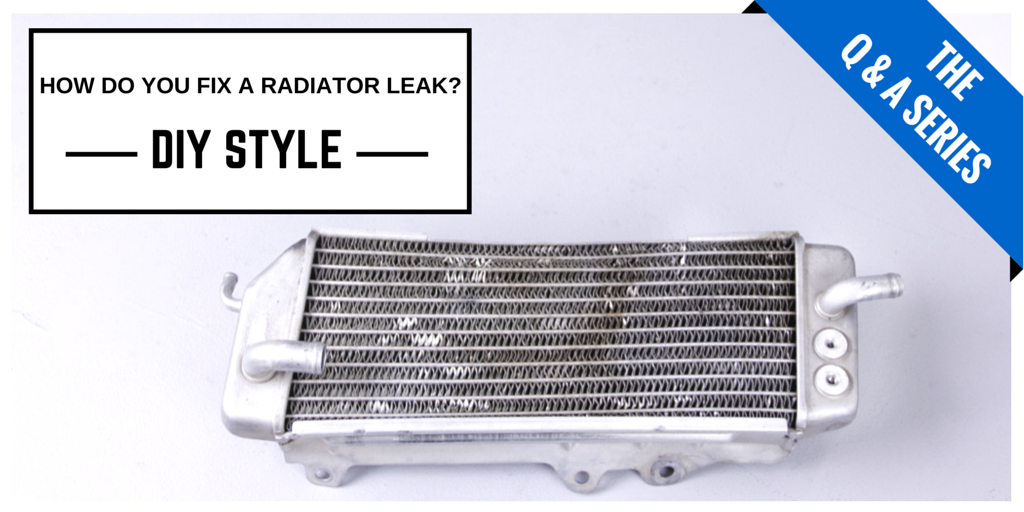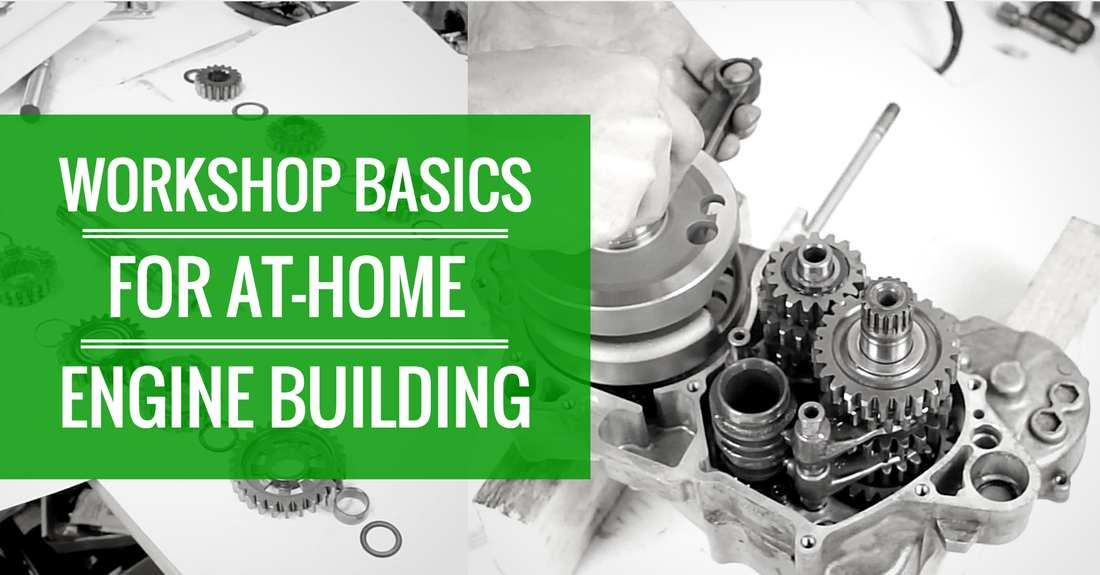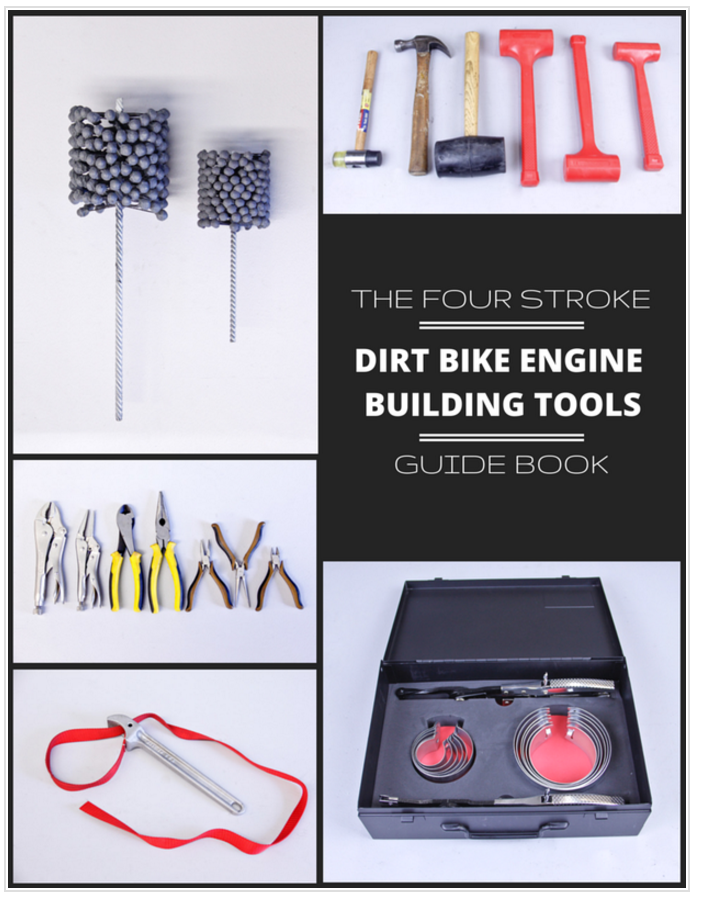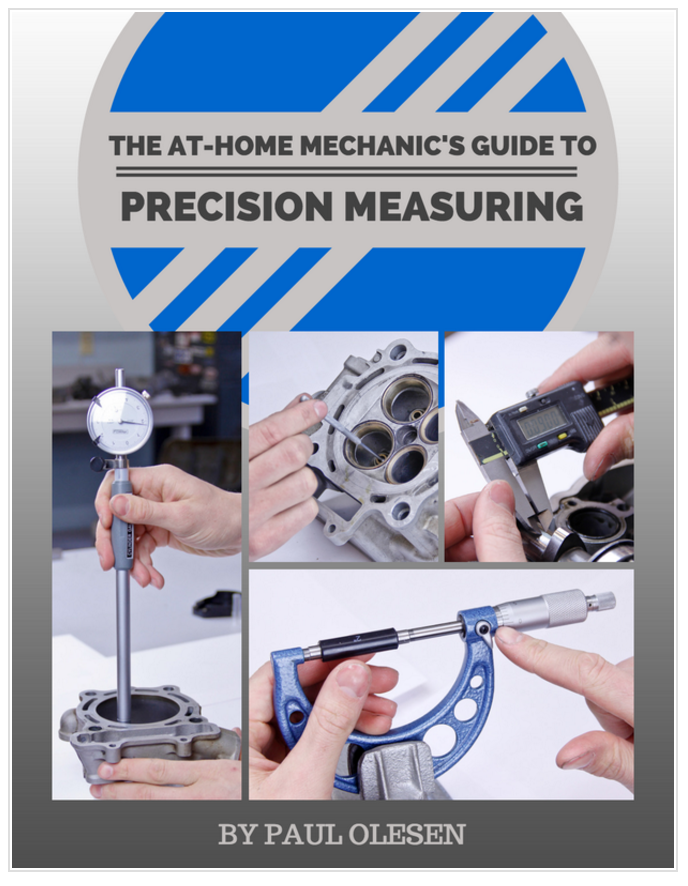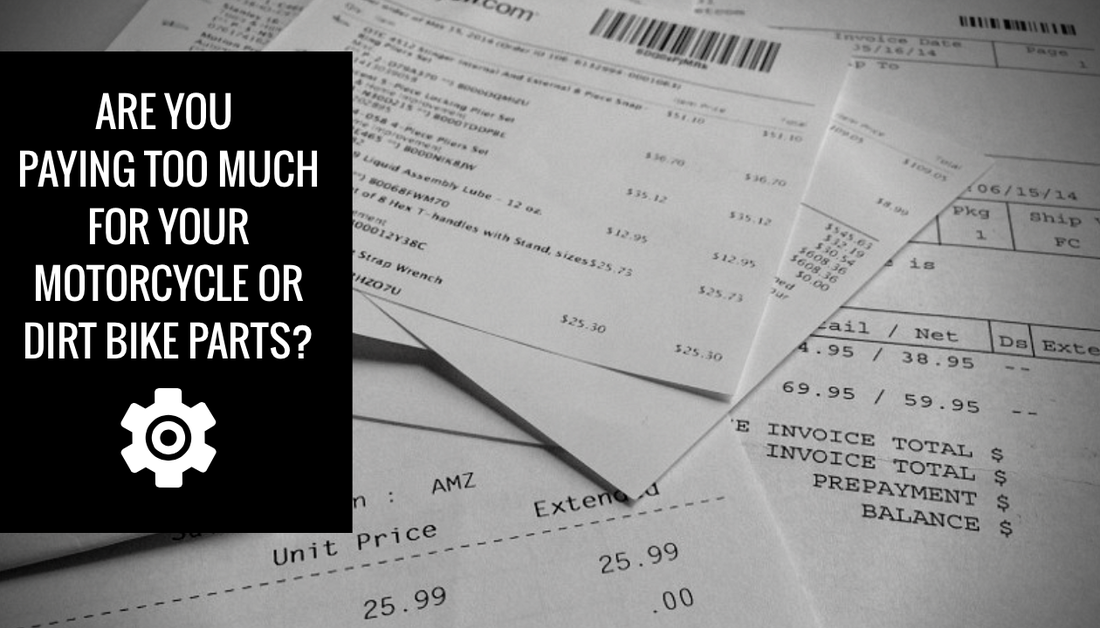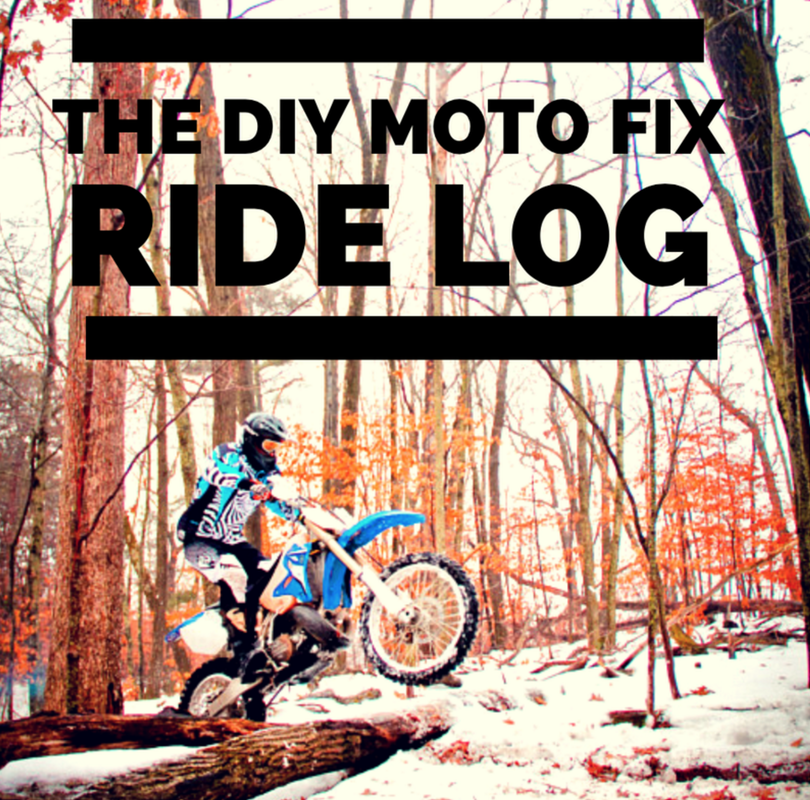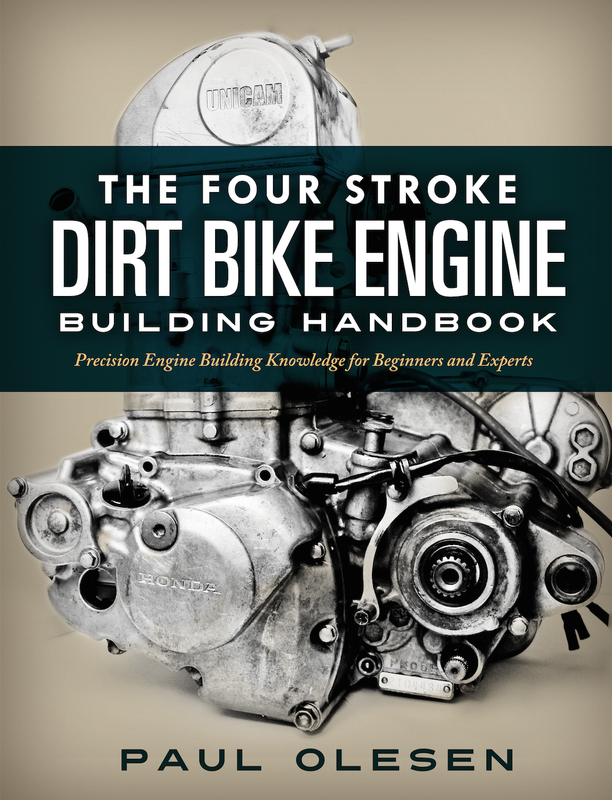|
Every once in awhile you may find that your bike has a fetish for getting close with immovable objects, like trees or rocks, no matter how you try to prevent it. Most of the time this isn’t too big of deal, but occasionally a damaged radiator and subsequent coolant leak will result. This is a big downer. Radiators aren’t cheap to replace! Luckily, some leaks can be repaired if they are small and happen to originate in a favorable location. Not all leaks will be repairable, but once the radiator is leaking there is no harm in finding out if you can repair it yourself.
I like to compare building an engine to performing open heart surgery. The precision and organization that goes into open heart surgery is exactly the mindset you need as you begin to rebuild your engine. Just like an operating room, I require my workspace to be as clean as possible. In the industry, companies have dedicated rooms just for engine building. These rooms are equipped with dust management systems, precise temperature control, and spotless work surfaces. I don’t expect the home mechanic to have this intense of a setup, but you should aim to have the cleanest work area possible.

How much does a full engine rebuild cost you when you do it on your own? This is a question I see come up a lot in the forums, so I decided to address it again. You can check out an incredibly in-depth post on comparing what shops charge versus doing it yourself by clicking here. Otherwise read on for a great run down of what a full four stroke dirt bike engine rebuild in your own garage costs.
When you are using all OEM parts, which includes all new bearings throughout the engine, a cylinder head (reconditioned or new), new valvetrain, new crank, new piston, new cam chain and tensioner, and a freshly honed cylinder, the cost comes out to be between $1300 and $1500. If some aftermarket parts are utilized, the total cost will be around $300 less than the previously mentioned. Compare that price to $2000+ when you have a shop take care of it. Then add in the fact that when you rebuild yourself, you don't have to worry about someone else mishandling your bike or carelessly assembling your motor. When rebuilding your dirt bike engine yourself, you will know that the job was done correctly and meticulously. Another thing to consider is that once you learn how to rebuild an engine correctly, this knowledge will forever extend the life of your bike(s) and your bank account. How about the cost of a top end overhaul in your own garage? This could run you as little as $260 for a piston replacement, which includes a new piston, rings, circlips, head and base gaskets, and a freshly honed cylinder. Pretty inexpensive right? On the flip side a severely worn out top end which needs every bell and whistle replaced, aka the cylinder, the head, and valvetrain components could cost you $900 in OEM parts plus any machine work that must be done on the head or cylinder. Again, compare this to the $950 to $1500+ range for an in-shop piston replacement. These at-home mechanic perks are completely dependent on you putting the bike together correctly though, because if you don’t it can cost you big time. I read horror stories all the time on forums about guys who have built engines, but by the second or third ride they have grenaded. Most blame the parts, but more often than not the unpleasant truth is that assembly error and lack of attention to detail are the culprits. When I first started tearing into my own bike I made a lot of mistakes that I wish I could have avoided because it did end up costing me in the long run. Looking back now on those rookie rebuilds, after my education as a powertrain engineer and having designed and built an entire motorcycle engine, there were so many things I could have avoided if I had more help. The only thing available to me back then was a factory service manual, but a service manual is only part of the puzzle. For someone who is just getting into the whole rebuild world the service manuals are great for referencing specifications and summarizing procedures. However, the service manuals don't identify key inspection points, tell you what to look for, or instruct on key techniques. Without having years of experience under your belt, you become susceptible to missing critical details and steps throughout the build. Let me add that trying to watch free how-to videos online is a mess as well. After watching as many of these free videos online that I could find, as a professional I wish I could warn at-home mechanics to beware. These videos are poorly made, the attention to detail is nonexistent, the information provided is spotty at best, and the mistakes that can be accrued from trying to reference them can be costly. So how do you learn to rebuild correctly? Once I started pursuing an education and career in the motorcycle industry, I finally learned how to rebuild dirt bike engines the right way. Before this time, I kept on wishing that I had a mentor who could teach me how to do everything correctly. By working with highly skilled and experienced engine builders and engineers on a vast array of different engines, I learned that attention to detail, technique, and understanding how parts interact are all important aspects of rebuilding a healthy engine. Another key to my rebuild success was having the right tools and taking the time to measure things precisely. As I began to rebuild engines more and more, I realized that there are steps in which you need to trust a professional to do the work. Things like cutting valve seats, installing new valve guides, and rebuilding crankshafts are a few examples. Luckily, even with these specialized jobs getting farmed out, over 90% of the rebuild work can be done right at home. This means you still end up saving a ton of money. So how do we bridge that gap for the riders who want to learn how to rebuild their own engines the right way and save themselves money? What if you could have an in-shop mentor?
There are a ton of riders out there who would love to do the work themselves and learn more about the rebuild process, if they could only find a credible source to learn from. That’s where DIY Moto Fix comes in.
My aim is to teach at-home mechanics who want to learn from a professional on how to rebuild their own engines to exceptional industry standards. I want to be that mentor for dirt bikers everywhere that I needed all those years ago. If you want to learn from a professional, fix your own bike, and get back to riding check out my two published books on rebuilding dirt bike engines. You will also find tons of free guides to help get you started. Below are two of my most popular guides to date, with over 5000+ downloads.
Click here for the entire list of free guides I offer and download until your heart's content. Thanks for reading, and best of luck with your next rebuild!
Group #1 - The at-home mechanic that does some of their work themselves and uses a shop for other tasks.
Group #2 - The at-home mechanic that does everything on their own and are fully independent. When it comes to group #1, if you have a relationship with a shop, not just the price of parts should be considered when purchasing. I believe if you have a good relationship with a shop you count on for some of the maintenance work required on your bike, the first place you should turn for parts is that shop. By ordering parts through the shop you are supporting their business which in turn supports you. Growing your relationship with a shop you trust will be beneficial in the long run as you will be more likely to get better prices on labor in the future, may be able to borrow a specialty tool from time to time, and get free advice with a mechanical job you are working on at home. For group #2, the mechanics that never associate with a shop, price is truly the only factor when it comes to picking up parts, so supporting a shop by purchasing parts through them doesn’t really benefit you. Perhaps some folks who fall into group #1 don’t have a great relationship with their shop, and have found their parts to be exorbitantly high and want an alternative. Below are my suggestions on sourcing parts for these at-home mechanics. 1. Order through a friend that works in the industry I have several close friends that work in the motorcycle industry (shops, OEM manufacturers, and aftermarket manufacturers) and will use them from time to time to source parts. Most of these folks get a pretty big discount on parts and if I’m after expensive items I will try to use them. I respect their time and willingness to help me out and don’t do this too often (no one wants to be overbearing or a burden). I wouldn’t suggest running out and trying to foster a relationship with someone just to use their discount, but if you happen to have a friend you are close with don’t overlook the opportunity. 2. Denniskirk.com One of my favorites for ordering aftermarket parts and gear from. The prices are reasonable, but the main draw for me is Dennis Kirk has an option for order pickup. This is great for locals (Dennis Kirk is in Rush City, MN) who live nearby. I can phone in, order more gear than I intend on buying (for sizing purposes), tell them when I’m coming, and show up with my entire order neatly organized in a box waiting for me to try on before I buy. Plus they have a huge selection of aftermarket parts, so if I need something ASAP I can drive in and pick it up. DK also offers free shipping on orders over $89. 3. RockyMountainATVMC.com I’m starting to check out Rocky Mountain more frequently, but don’t typically order too many parts from them. Usually I find Rocky Mountain has the best prices on specialty tools like flywheel pullers, deglazing/honing tools, and other miscellaneous tools. 4. Ebay.com If there is a particularly expensive part I’m looking for I’ll usually check Ebay just in case there is a new one conveniently available. I’ve also had good luck finding assorted gasket kits and bolt kits for various engine models. Ebay is a golden mecca of used parts and if I’m in the market for something used - this is where I turn. I’ve had good luck finding reasonable prices on complete engines, bottom ends, transmissions, and other various parts. I will advise using caution though, making sure you know what you are exactly looking for when buying used off Ebay because I have been burned a time or two when buying engine related components. 5. Amazon.com I’ve found Amazon to be a fairly good spot to get the best prices on maintenance items such as air filters, oil filters, fork oil, and engine oil. In addition, the tool selection and prices that Amazon offers is reasonable. I hope you’ve found my recommendations helpful. These stores are not the end all be all for buying parts - it’s just what has worked well for me. Do your own research before buying to make sure you’re getting a fair price. If you have a favorite place to shop, a recommendation, or advice help everyone out, please leave a comment below! *Please note I am not affiliated with nor do I benefit from my recommendations of the aforementioned companies.
Having a simple ride log/service sheet is a great way to keep track of your machine’s maintenance and stay ahead of any potential problems. Another great device to pick up for your dirt bike is an hour meter. Hour meters are great since they only record actual engine running time, which gives you a more realistic time value than estimating how long your engine ran while you were out on your ride.
I wanted to share with you the log I use to keep track of the time I put on my bikes. Click the link below to download a free copy. I have set up three versions, one for Excel users, one for Google Docs users, and a PDF that can be printed for the folks that like to document their riding on paper... |
InspirationsCategories
All
Archives
November 2022
Favorite Films |

